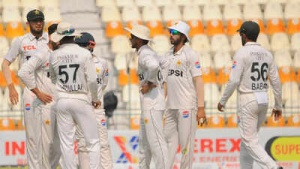The recent passing of Indian actress Shefali Jariwala has sparked widespread concern about the increasing incidence of sudden cardiac events among women. While the specific cause of her death is pending official confirmation through post-mortem and forensic analysis, initial reports point to cardiac arrest, a growing threat to middle-aged women who may appear to be in good health.

Sudden Cardiac Death (SCD), once considered rare in young adults, is becoming increasingly prevalent, especially in India. This rise has prompted serious concern within the medical field. Cardiovascular diseases are responsible for about 28% of all deaths in India, and nearly 10% of these are linked to SCD. Worryingly, a large number of these deaths affect people between 30 and 50 years old.
India's evolving socioeconomic landscape has brought about significant lifestyle changes, including:
These factors contribute to a rise in conditions like hypertension, obesity, diabetes, and coronary artery disease, all major risk factors for SCD.
While historically more common in men, recent studies highlight the unique risks women face, which are often overlooked. Women who experience SCD often have no prior history or diagnosis of cardiac issues. Structural problems, such as myocardial scarring and ischemic heart disease, can go undetected during their lifetime and are only found during post-mortem examinations. Adding to the complexity, many women don't show typical warning signs like chest pain or ECG abnormalities, making early detection very difficult.
Women in their 40s and 50s, like Shefali Jariwala, face a silent yet serious risk from underlying cardiac conditions. In younger people, SCD is often linked to inherited or electrical disorders, including:
These conditions can remain asymptomatic until a fatal arrhythmia happens.
In this age range, other factors like left ventricular hypertrophy, obesity, and myocardial fibrosis can increase vulnerability. The progression of myocardial scarring and fibrosis with age can be caused by continued exposure to cardiovascular risks, repeated micro-ischemic events, and hormonal changes, particularly during perimenopause. Furthermore, conditions like Myocardial Infarction with Non-Obstructive Coronary Arteries (MINOCA), which are more common in younger women, often leave no traces in autopsies, making diagnosis even more difficult.
Stress was a significant factor in Shefali's life, starting from her early career as a teen star. Takutsobo cardiomyopathy (Broken Heart Syndrome) or Stress-induced Cardiomyopathy is also a major cause of SCD in women who are emotionally stressed and multitask frequently. Shefali also faced personal challenges related to her divorce, as well as anxiety, depression, and epilepsy, all of which can impact cardiovascular health. Psychiatric medications, especially those that prolong the QT interval, have also been linked to a higher risk of SCD.
Despite the seriousness of this issue, women are still underrepresented in preventive heart care. Symptoms like fatigue, palpitations, or breathlessness are often dismissed or misattributed, leading to delays in critical intervention. While heart attacks are caused by blocked arteries, cardiac arrest results from electrical disturbances that cause the heart to stop suddenly. Immediate CPR and defibrillation are often the only life-saving treatments, emphasizing the importance of identifying risks early on.
Medical experts are now advocating for more targeted public health strategies. There is a need for better early screening tools specifically designed for women, particularly during perimenopause when cardiac risks increase significantly.
As the entertainment industry and fans mourn the loss of Shefali Jariwala, her tragic death serves as a catalyst for change. Her passing highlights a health crisis that is often overlooked and the urgent need for systematic improvements in how women's heart health is addressed.
Shefali was a star who captivated audiences with her presence on screen. In the aftermath of her untimely death, she may also be remembered as a symbol of awareness, a reminder that the heart’s silence can be fatal, and that women's cardiac health requires immediate attention, investment, and action.
Newer articles
Older articles
 Daren Sammy Fined, Handed Demerit Point for Umpire Criticism After Test Match Comments
Daren Sammy Fined, Handed Demerit Point for Umpire Criticism After Test Match Comments
 Gavaskar Calls for Yadav's Inclusion, Questions Middle Order After India's Test Defeat
Gavaskar Calls for Yadav's Inclusion, Questions Middle Order After India's Test Defeat
 Decoding Your Health: Spotting 5 Prediabetes Warning Signs Before a Blood Test
Decoding Your Health: Spotting 5 Prediabetes Warning Signs Before a Blood Test
 X Corp. Cracks Down: Half a Million Indian Accounts Suspended for Policy Breaches
X Corp. Cracks Down: Half a Million Indian Accounts Suspended for Policy Breaches
 Headline:
Early Warning Signs: 5 Heart Attack Symptoms to Watch Out For Weeks in Advance
Headline:
Early Warning Signs: 5 Heart Attack Symptoms to Watch Out For Weeks in Advance
 Facial Icing: Benefits, Risks, and Safe Application of This Viral Beauty Trend
Facial Icing: Benefits, Risks, and Safe Application of This Viral Beauty Trend
 Chess Sensation Praggnanandhaa Joins Magnus Carlsen's Team Liquid for Esports World Cup
Chess Sensation Praggnanandhaa Joins Magnus Carlsen's Team Liquid for Esports World Cup
 Mastering JPG to PDF Conversion: A Graphic Designer's Guide to Quality and Efficiency
Mastering JPG to PDF Conversion: A Graphic Designer's Guide to Quality and Efficiency
 MI New York's Tajinder Dhillon Shines: From IPL Benchwarmer to MLC Star
MI New York's Tajinder Dhillon Shines: From IPL Benchwarmer to MLC Star
 Akmal Blasts PCB's Interim Coach Choice: Ex-Cricketer Questions Logic Behind Mahmood Appointment
Akmal Blasts PCB's Interim Coach Choice: Ex-Cricketer Questions Logic Behind Mahmood Appointment